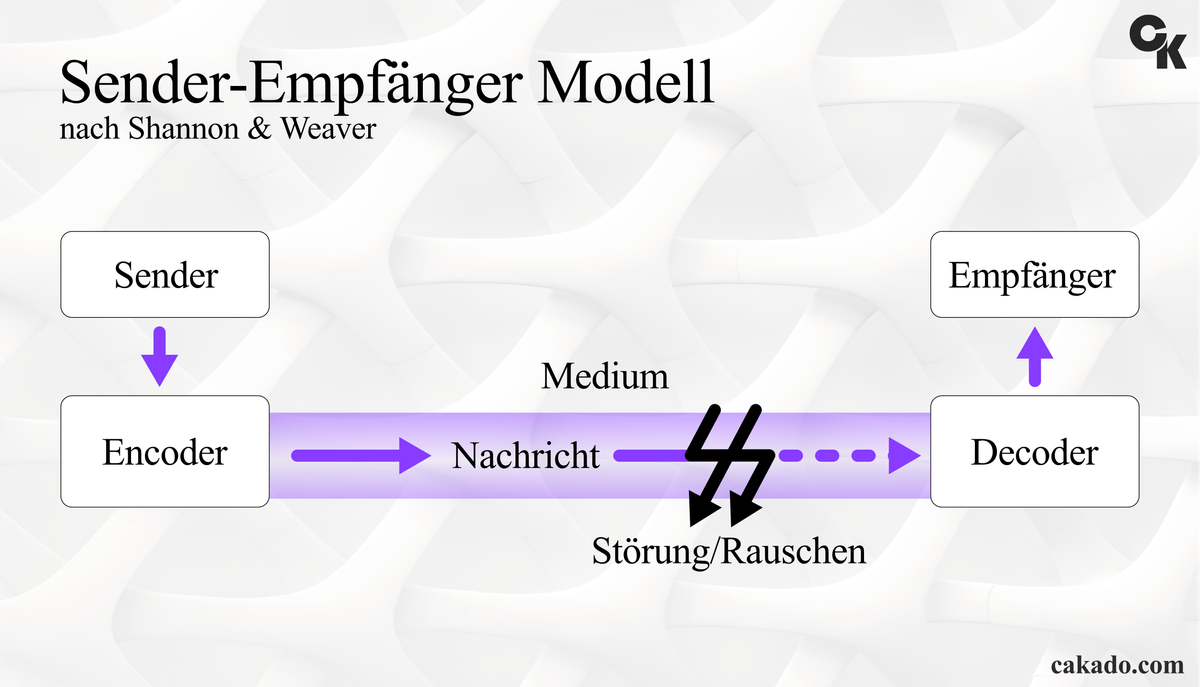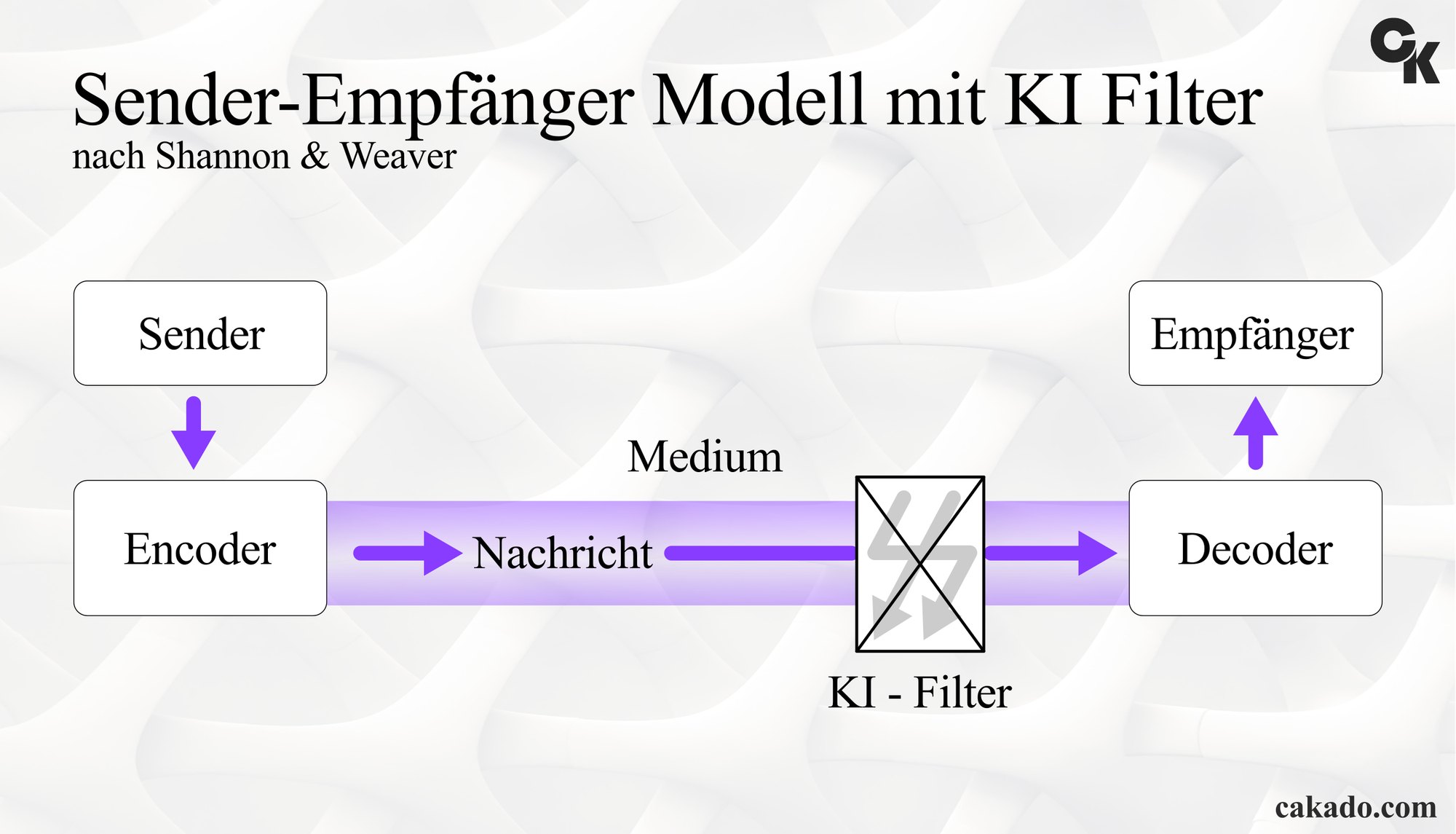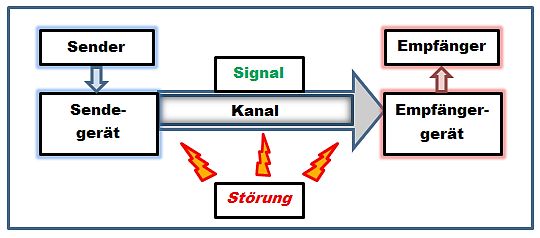AI in the classic communication model according to Shannon & Weaver
In this blog post, we take a more theoretical look at Shannon and Weaver's classic communication model to analyze how AI is transforming communication and what implications this has for us.

In today's technology-driven world, communication is a central element of all human interaction processes. In this blog post, we'll get more theoretical and look at the classic communication model by Shannon and Weaver to analyze how AI is transforming communication and what implications this has for us.
Shannon and Weaver's communication model, originally developed in the 1940s, describes the process of communication as a series of five key components: transmitter, encoder, channel, decoder and receiver. Each of these components plays a crucial role in the communication process. The sender enables the message to be transmitted, the encoder encodes it, the channel transports the encoded message, the decoder decodes it and the receiver receives the message.
A driving factor of the communicated content in this model is the "intention". This must be clearly decipherable by the recipient. A very simple example is language barriers caused by accents. Here, AI can help to optimize control over the "noise" in the communication process. Ultimately, human communication is nothing more than sending qualitative data via language as a medium. AI as a transformer of qualitative data, can help as a "noise filter" to ensure data quality so that sender and receiver communicate on the same wavelength.

This is all very theoretical so let's look at a practical example. There are already several AI voice solutions on the market that filter accents from speech. We all know the problem in customer service. You have a technical problem but find it difficult to understand the other person due to a strong accent. This is disadvantageous for both sides. Here, AI can act as an intermediate filter to help make communication more pleasant in both directions by either filtering out accents live or even translating language live (AI as a lingua franca).
However, a critical perspective is also necessary here. If used incorrectly, it can quickly happen that content is distorted and the actual intention does not reach the recipient, or is distorted. Caution is therefore required to ensure that AI does not become a letter carrier in a silent mail game. However, if used correctly, this technology supports open and efficient communication and removes barriers. I think that the right application can lead to a more inclusive way of communicating.
Would you use a filter like this?
Sources:








